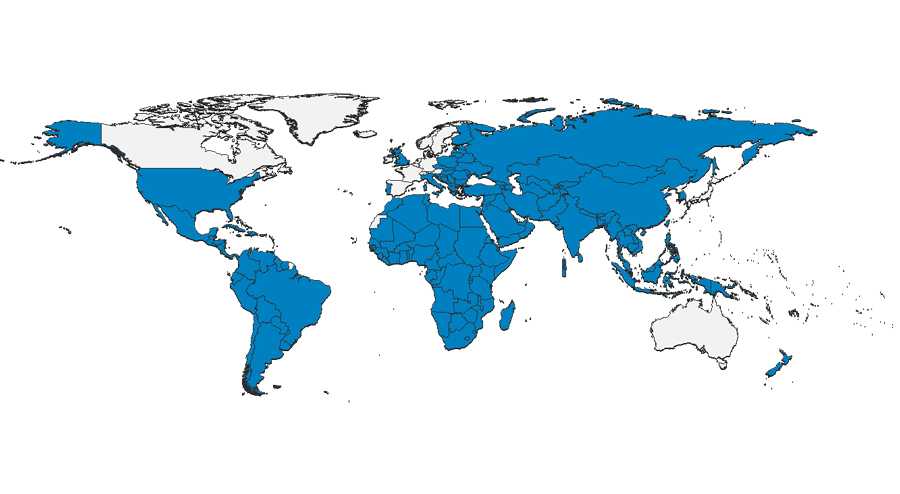Tracking the Global Tobacco Epidemic Among Youth
Tracking the Global Tobacco Epidemic Among Youth

Indu Ahluwalia
Tobacco use is a leading preventable cause of morbidity and mortality worldwide with nearly 6 million deaths caused by tobacco use every year. Cigarette smoking is the most common form of tobacco use in most countries, and the majority of adult smokers initiate smoking prior to the age of 18. Limiting access to cigarettes among youth is one strategy to curb the tobacco epidemic by preventing smoking initiation and reducing the number of new smokers.

Map of countries where the Global Youth Tobacco Survey has been conducted.
Surveillance of tobacco use among youth is a critical step in stemming the epidemic of tobacco globally. CDC’s tobacco control program has played a critical role in assisting countries around the globe in collecting essential information. The Global Tobacco Surveillance System (GTSS), a collaborative venture between U.S. CDC’s Office on Smoking and Health, WHO, and other external partners, is globally recognized as the standard for conducting adult and youth tobacco use surveillance and tracking key indicators consistently across countries. A key aspect of GTSS is the Global Youth Tobacco Survey (GYTS), the largest youth surveillance system in the world. The GYTS conducts surveys of children aged 13-15 years enrolled in school and has been operational in more than 180 sites. Since 2012, a standard protocol has been followed by 91 sites producing consistent and comparable data.

Data analysis team from the Philippines Department of Health and WHO Western Pacific Region and staff from CDC's Global Tobacco Control Branch during a GYTS data analysis workshop in Atlanta.
According to the 2012 U.S. Surgeon General’s Report on youth and young adults, exposure to tobacco advertising is one of the routes by which youth are exposed to tobacco products (3). The GYTS data collected between 2000 and 2014, in 174 sites show that youth aged 13-15 have reported exposure to advertisements about tobacco on T.V., videos or in movies in the past 30 days (range 15.2% in Albania in 2009 to 90.4% Paraguay in 2008). They also saw advertisements for tobacco products on billboards (2.2% in Madagascar in 2008 to 93.4% in Uruguay in 2007), and in newspapers or magazines (1.6% in Madagascar in 2008 to 88.0% in Paraguay in 2008). Not only did the students see tobacco advertised, they also reported being offered free cigarettes by a tobacco company (1.2% in Madagascar in 2008 to 48.2% in Singapore in 2000).
These data from GYTS demonstrate the value of surveillance. If we can measure it then we can do something about it. Challenges remain in tobacco use prevention and control among youth and GYTS data are an important source of information for countries to use in making decisions about tobacco control policy for this vulnerable population and to target prevention activities. Many sites have adopted and ratified the WHO’s Framework Convention on Tobacco Control (FCTC) to measure tobacco control and prevention efforts. We know from research that adoption of tobacco retail environment strategies to reduce and prevent marketing and sales of tobacco products to youth are critical to addressing youth initiation and use of tobacco products.
And, the majority of the sites for which data are reported have ratified the FCTC, Article 16 which recommends prohibiting sale of tobacco products to youth.
Related Links
-
To learn more about CDC’s work in global tobacco control, visit www.cdc.gov/tobacco/global
- To learn more about the Global Tobacco Surveillance System, visit https://www.cdc.gov/tobacco/global/gtss/index.htm
- To learn more about the WHO FCTC, visit http://www.who.int/fctc/en/
- Page last reviewed: May 26, 2016
- Page last updated: May 26, 2016
- Content source:
Global Health
Notice: Linking to a non-federal site does not constitute an endorsement by HHS, CDC or any of its employees of the sponsors or the information and products presented on the site.


 ShareCompartir
ShareCompartir